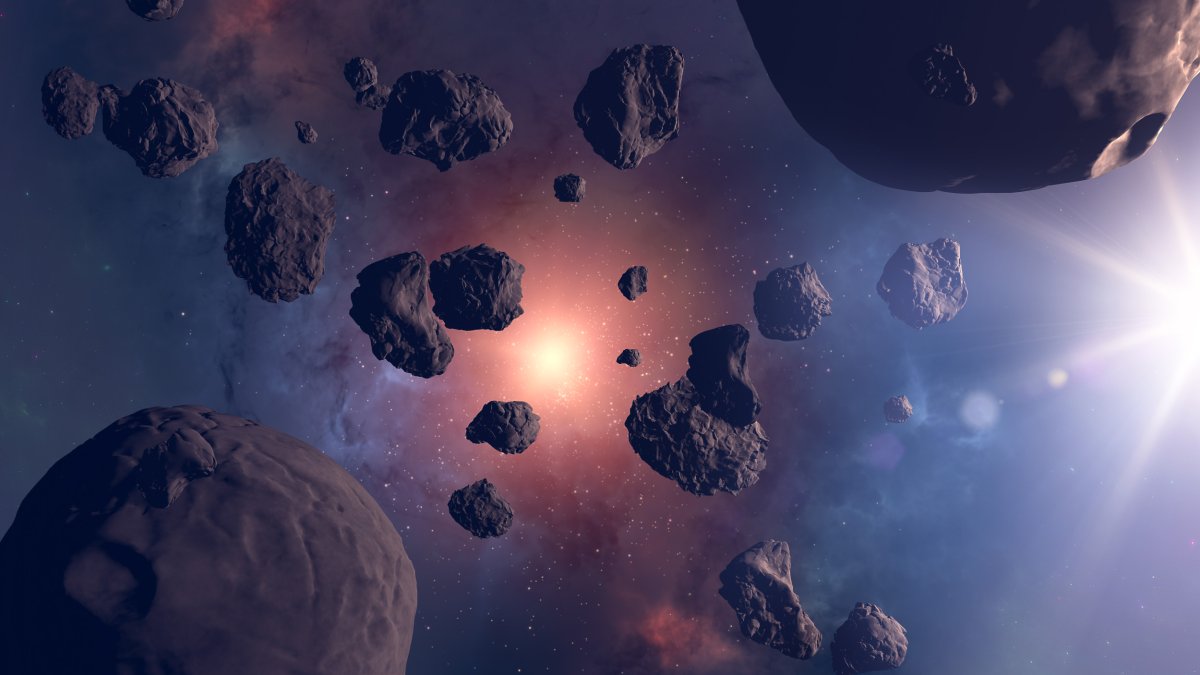One of the chemicals considered essential to life on Earth may have originated in outer space, researchers have found.
Nitrogen compounds, including ammonium salts, may have made their way to Earth via tiny meteoroids from the outer solar system, congregating at Earth's birthplace and becoming part of our planet's final form, according to new research published in the journal Nature Astronomy.
Nitrogen is one of the most important ingredients of life, as it is part of all amino acids, proteins, and DNA.
The international team of researchers, hailing from both Kyoto University and the University of Hawai'i at Mānoa, found that nitrogen compounds were present on the surface of the asteroid Ryugu, orbiting the sun near the Earth. They theorize that the same tiny meteorites that delivered these compounds to the asteroid from the outskirts of the solar system may have brought them to Earth back in its early days.

In the paper, the authors describe how samples of Ryugu brought back after the Japan Aerospace Exploration Agency's Hayabusa2 spacecraft landed on the asteroid in 2020 revealed that its surface was littered with iron nitride or Fe4N.
"We proposed that tiny meteorites, called micrometeorites, containing ammonia compounds were delivered from icy celestial bodies and collided with Ryugu," Toru Matsumoto, lead author of the study and assistant professor at Kyoto University, said in a statement. "The micrometeorite collisions trigger chemical reactions on magnetite and lead to the formation of the iron nitride."
The iron nitride on the asteroid's surface was also found alongside magnetite, comprised of iron and oxygen (Fe3O4), which loses oxygen atoms due to being blasted by the hydrogen ions in the solar wind out in space. This forms metallic iron on the magnetite, which then easily reacts with ammonia to form iron nitride.
The researchers suggest that meteoroids containing similar nitrogen compounds may have contributed to Earth's nitrogen, delivering these compounds to the area where Earth was forming in the early days of the solar system. Meteoroids are tiny space rocks, and meteors are what these rocks are called as they fall through the Earth's atmosphere. Meteorites are their name after making landfall on the Earth's surface.
"Meteors like the ones in the Leonid meteor shower are caused by small grains of dust or tiny pebbles," Daniel Brown, an associate professor in astronomy and science communication at Nottingham Trent University, told Newsweek. "These then enter the Earth's atmosphere at high speeds and are burnt up in high atmosphere."
These nitrogen compounds delivered by the meteoroids may have contributed to the beginnings of life on Earth, the researchers suggest.
"Our recent findings suggest the possibility that a greater amount of nitrogen compounds than previously recognized was transported near Earth, potentially serving as building blocks for life on our planet," Hope Ishii, study co-author and affiliate faculty at the Hawai'i Institute of Geophysics and Planetology in the UH Mānoa School of Ocean and Earth Science and Technology (SOEST), said in the statement.

Further investigation of the nitrogen compounds on the asteroid sample will help to clarify where they came from, as different nitrogen isotopes are more common in different regions of the solar system.
"Future analysis of the 14N/15N ratio will further constrain the origin of the nitride, because the isotopic ratio varies across the Solar System," the authors wrote in the paper. "If nitrogen-rich dust is present in the orbit of Ryugu, dust impacts may have occurred in the near-Earth region, because the regolith residence time of surface and subsurface materials on Ryugu (around 5 Myr) is consistent with the resurfacing timescale after Ryugu migrated from the main asteroid belt into its current near-Earth orbit."
Do you have a tip on a science story that Newsweek should be covering? Do you have a question about space? Let us know via science@newsweek.com.
Uncommon Knowledge
Newsweek is committed to challenging conventional wisdom and finding connections in the search for common ground.
Newsweek is committed to challenging conventional wisdom and finding connections in the search for common ground.
About the writer
Jess Thomson is a Newsweek Science Reporter based in London UK. Her focus is reporting on science, technology and healthcare. ... Read more
To read how Newsweek uses AI as a newsroom tool, Click here.








